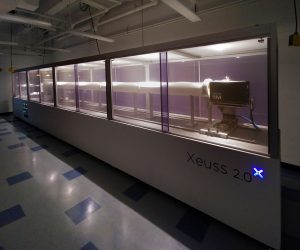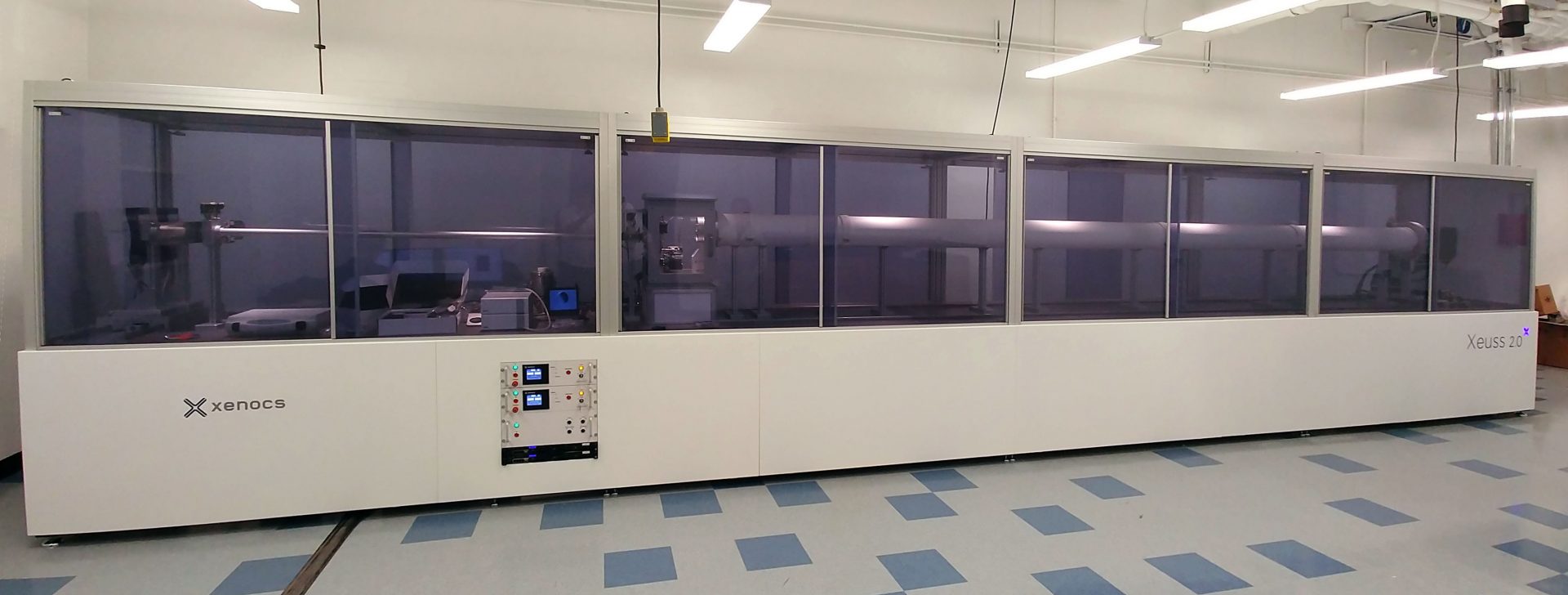Supervisor/Coordinator: Iryna Golovina
Contact: Iryna Golovina
Phone: 215-573-9482
Email: irynag@upenn.edu
Oversight Committee Chair: Karen I. Winey
 The heart of this facility is a state of the art instrument for ultra-small to wide angle X-ray scattering. The Xeuss 2.0 from Xenocs permits characterization over length scales from 0.09 nm to 600 nm and thus facilitates study of hierarchical structures in a wide range of hard and soft materials. Features and capabilities include:
The heart of this facility is a state of the art instrument for ultra-small to wide angle X-ray scattering. The Xeuss 2.0 from Xenocs permits characterization over length scales from 0.09 nm to 600 nm and thus facilitates study of hierarchical structures in a wide range of hard and soft materials. Features and capabilities include:
- Dual copper and molybdenum X-ray sources.
- Dual detectors: a 1M Pilatus solid state detector for small angle scattering, and a 100K Dectris detector for scattering up to 45°.
- Adjustable sample-to-detector distance between 15 cm and 6 meters allows measurements for variable d-spacing ranges.
- Temperature-dependent measurements between -90°C and +250°C.
- Tensile stage with temperature control.
- Simultaneous control of temperature and humidity.
- Multiple sample holders for measurements in transmission or grazing incidence configuration.
The facility is available to Penn faculty, staff, and students, and to outside users on an hourly fee basis.
Non-Penn academic users: $60/hour or $600/24-hour day
Non-academic users: $300/hour or $3000/24-hour day
There is no charge for initial training
DEXS Measurement Service is available at an additional 39% administrative fee to the total cost of service for outside users who are unable to visit the facility directly.
Cutting-edge research at Penn is conducted using DEXS equipment.
For videos, prepared by Paul Heiney, that provide an introduction to modern techniques of X-ray diffraction, please visit the X-Ray Scattering Lecture Series page hosted by the Penn’s Scholarly Commons.
Oversight Committee:
Eric Detsi
Zahra Fakhraai
Paul A. Heiney
Christopher B. Murray
Chinedum Osuji
Eric Stach
Karen I. Winey
Funding for this instrument was provided by a NSF-MRI grant (17-25969), a ARO-DURIP grant (W911NF-17-1-0282), and the University of Pennsylvania.
Facilities users must include the following text in the acknowledgment section of their publications:
“The authors acknowledge the use of facilities supported by the Laboratory for Research on the Structure of Matter and the NSF through the University of Pennsylvania Materials Research Science and Engineering Center (MRSEC) DMR-2309043.”

